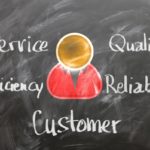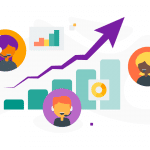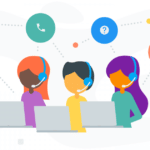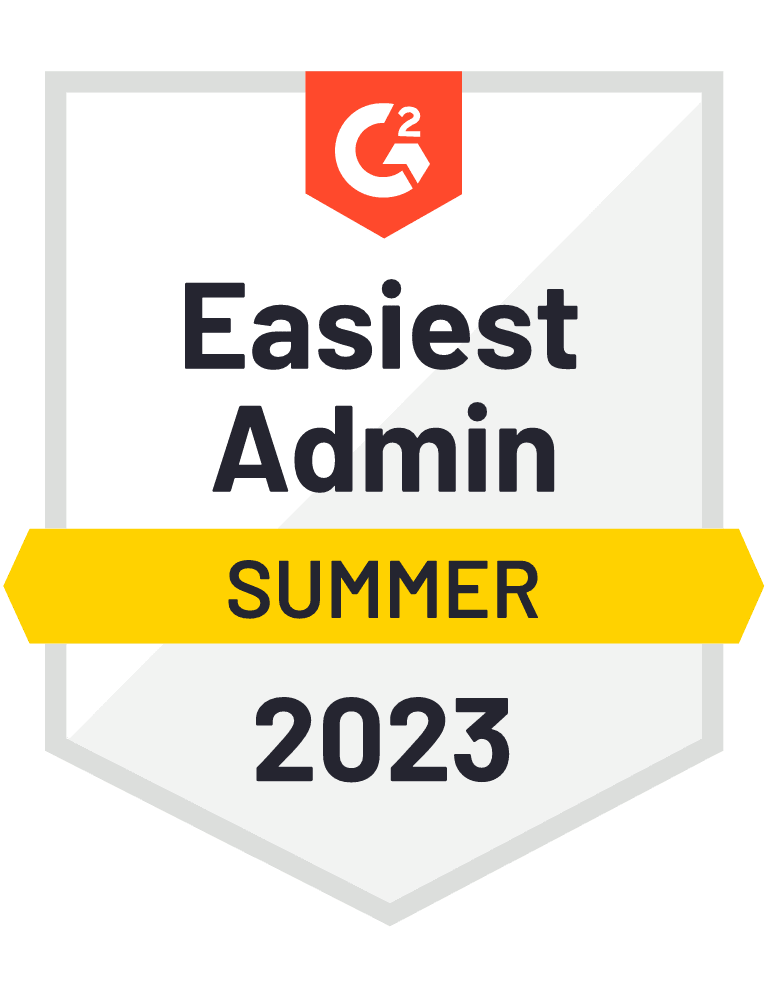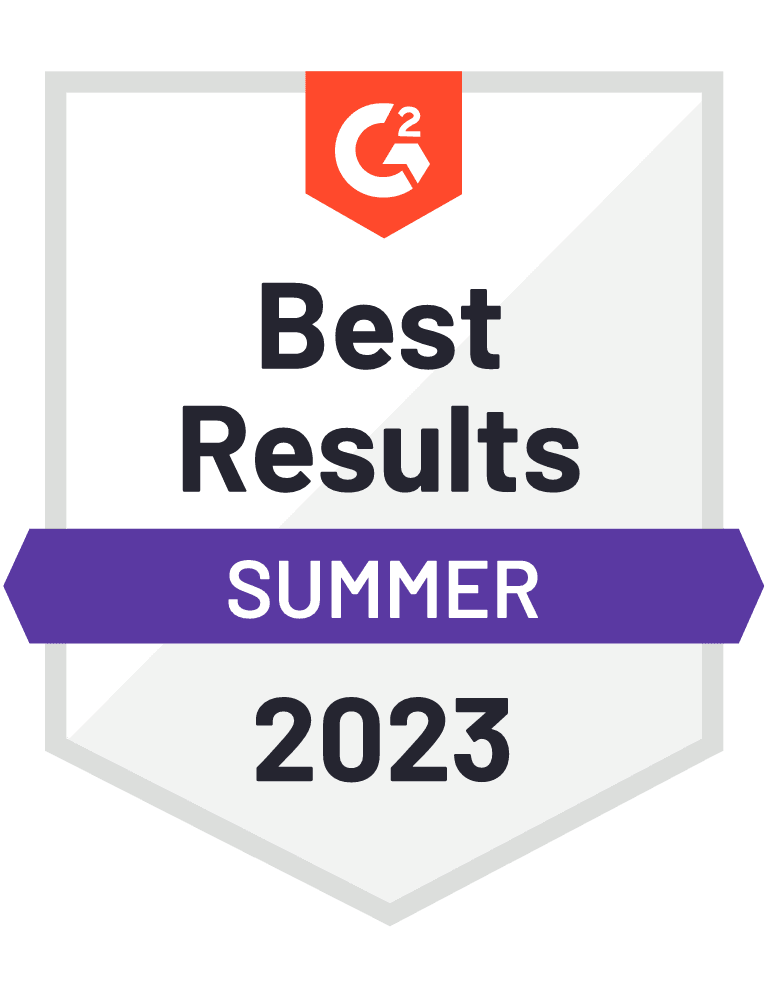Interview with Shep Hyken: Customer service, customer loyalty, and a perfect mix between personalization and automation
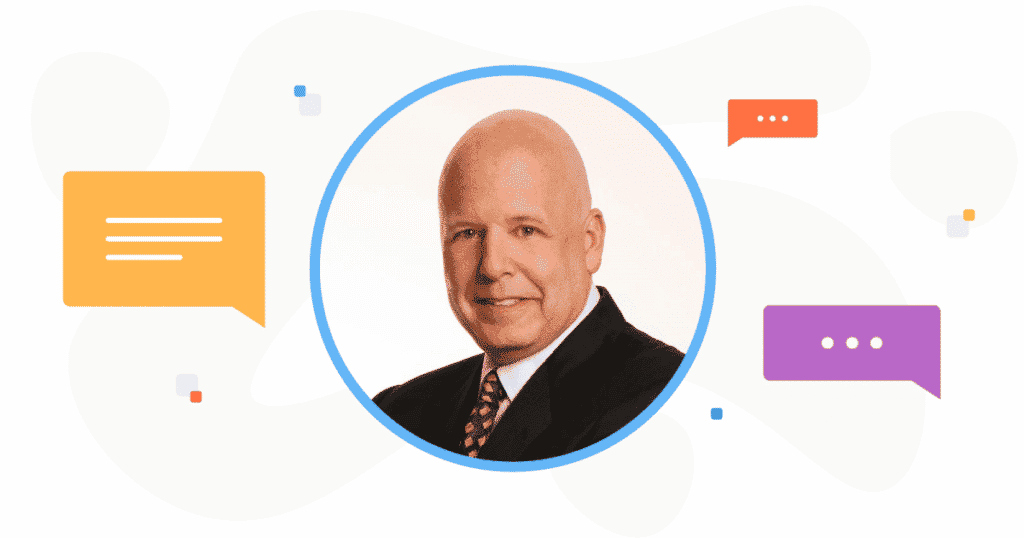
Shep Hyken, CSP, CPAE is the CAO (Chief Amazement Officer) of Shepard Presentations. As a customer service and experience expert and keynote speaker, Shep works with companies who want to build loyal relationships with their customers and employees.
His focus is on delivering amazing customer service, customer engagement, managing the customer experience, and creating customer loyalty. He is a hall of fame speaker (National Speakers Association) and a New York Times and Wall Street Journal best-selling author.
We invited Shep Hyken for a virtual cup of coffee to talk about changes in customer service, customer loyalty, and a perfect mix between personalization and automation.
How did your career start, when did you get inspired and think that sharing your customer service knowledge with others would be a way of life?
Sure! Well, I had no idea that I was going to be doing what I am doing today. I started my first business when I was 12 years old, and it was a birthday party magic show business where I entertained little kids at birthday parties. And my mom picked me up after school, dropped me off at this home. I entertained them for about forty-five minutes.
Deliver excellent service
I got paid, and when I was finished I went home and my mom said “what are you going to do after dinner?” And I thought the correct answer was “homework”, because that’s what usually you do on a school night. And she said “not until you write a thank you note to those people that just paid you.” Then my dad said “follow up in a week. Call the parents, thank them again and then ask them how they like the show. And then get specific, what tricks did they like the most? And you’ll learn over a period of time what tricks are great and which you don’t hear about.”
He said to get rid of those and replace them with tricks that work and people talk about. about. Now, I did not realize it, but this was my first lesson in customer service and experience because my mom was saying “show appreciation”. My dad was saying “get feedback and then listen to that feedback and then act on it and create a better show”, or in the business case, a better process. So I was learning process improvement. I had no idea, I’m 12 years old and this is what I’m learning.
So I continue to perform. I eventually started working in nightclubs and corporate events and I was doing this while I was going to college. When I graduated college, I saw a couple of motivational speakers and I thought “you know what? I could write a speech about customer service.” That’s what I love the most. And that’s where it all started. This was a long time ago. And I started picking up the phone and calling companies and asking them “do you hire speakers?”
And if they said “yes”, I said “what does it take to be considered? This is what I talk about.” And next thing you know, I’m working for some of the greatest companies in the world. And that’s how the career started.
Now that you are giving speeches via live streaming these days, do you miss the contact with the audience that you always have on stage? How do you handle it?
Wow. So I love being on the stage. It’s fun. It’s a lot of work. It’s, I guess, exciting for me because the anticipation builds up. And yes, I miss the live audience. I miss the interaction. However, I have been doing virtual events for years. Maybe I did 10, maybe 15 a year. Well, now it’s like 10 a month. And it’s why you don’t really connect with an audience the same way, you connect in a totally different way. And over the last year, I have become much better at these virtual events. I know the formats that work the best. I know the ones that make the most impact. I know how to keep an audience from going to sleep.
There are people who say they’re Zoom fatigued. And I say, no, it’s bad presenter fatigue, it’s bad meetings fatigue. That’s what they’re getting tired of. And if we can bring in some type of format that’s a little bit more entertaining, content that’s not only really important for them to have but presented in a way that’s engaging and energetic and enthusiastic, you know, you’re going to win the audience over and you’re going to deliver content.
It’s a totally different experience. But if you do it right, the impact can be made. I think the most important thing is if I do a speech and I show up on stage or I do a virtual event and I show up in your Zoom account or whatever platform you’re using, it took the same amount of preparation to do the speech or the Zoom event.
Nothing’s different other than the way it’s being delivered. And that’s where the speaker, at least for myself, has to adjust. And we have to read the audience as best as we can. We can tell the audience is engaged by the questions that they might be asking, the comments that they’re making. And if there is an art to making it better than just a talking head on a screen or talking head that shares slide on their screen. So that’s the goal.
I want to make my presentations virtually. I want to make them just as strong as they are in person.
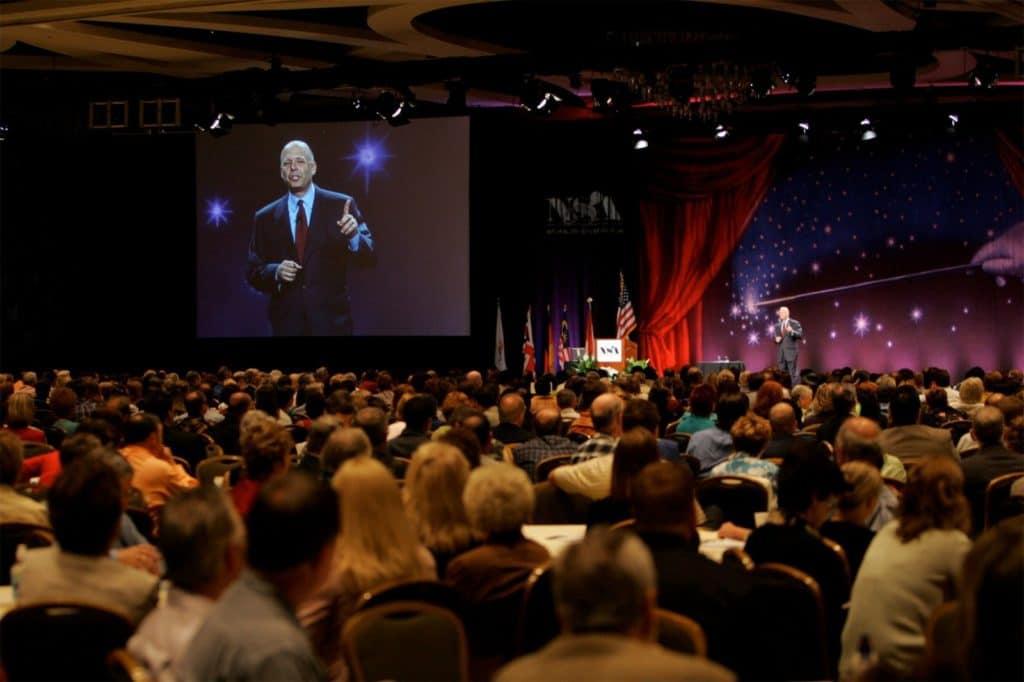
2020 turned the world upside down. In your latest book, Be Amazing or Go Home, you talk about habits that create amazement. In 2021, would you add another point?
I think the extra habit would be, and I think it’s a practice you have to get comfortable with, is to practice flexibility. Because if there was ever a time that we needed to prove flexibility, it’s all of our lives changed all over the world.
It wasn’t just in one part of the world or one country or one industry, no. Everything changed last year, right around March.
And I think that flexibility is the key. People talk about “oh, we had to pivot.” I like the word “pivot.” I even used to use the word “pivot.” And every once in a while, I still let it slip into my vocabulary. But I believe “pivot” is the wrong word because when you pivot, you turn your back on something. And I would hate to think we turn our back on all the things that we were successful with to try something different, new, once, and forget about it.
I believe flexibility allows us to keep what we have been successful with and try new ways of using it, but never lose sight of what got you there in the first place. So practicing flexibility, being willing to try something new, which is part of flexibility, I think that’s the habit I would add to Be amazing…: people are flexible.
And then in one of your YouTube videos, you mentioned that convenience is no longer an option, but a must for customers. Do you think that this is just a trend in customer service during a pandemic, or will this now always be a necessity for a business to exist?
This is a very good question. So when I wrote the book, The Convenience Revolution, the idea of creating convenience was almost a breakthrough. You looked at what the greatest companies out there were doing, big and small. When I say big, it’s like Amazon. When I say small, it could be the shoe repair center down the street that says “hey, I’ll come and pick your shoes up for you and drop them off.”
That’s more convenient. Well, that happened to be a competitive differentiator. And what happened during the pandemic is that all of a sudden all of the people that never thought about delivery options had to start thinking about, I need to deliver a product, whether it be food at a restaurant, groceries from a grocery store, pharmacy items, whatever.
Even automobile dealerships were now saying “if you want to test drive a car, we’ll bring the car to you.” That convenience all of a sudden became not just a trend, but an expectation.
And when all of this is over, customers will have experienced what great convenience is. And that’s what they want from this point forward.
The next question we have is about the most significant changes, and you just said about the one that was probably the most significant in customer service that began during the pandemic. Can you recognize any other trends that you’ve seen from your experience?
First of all, convenience is built into that. You must build convenience into the process. But what I noticed, if you want to call it significant change, is that we were thrust into the future immediately. And I’ll give you a good example of what I mean by that, but first of all let me finish this thought.
The technology, the innovation, and everything that has happened in the last year during this pandemic look like it’s brand new. It’s not brand new. It’s simply adapted or adapted technologies that were there before. Not a lot has been invented in the last year during this pandemic. What’s happened is a lot has been adapted. We were put into the future by three to five years if the pandemic had not happened at all.
What we are experiencing today is what we would have eventually experienced anyway. And to put it into terms that maybe many of us can understand, we’ve seen retail malls, shopping centers, struggling stores closing down when the pandemic hit, more and more stores closed down.
The shopping mall retailer, and by the way some of them have figured out how to be successful and stay in the malls, but many were struggling. They were struggling before the pandemic. All the pandemic did was accelerate the problems. And had the pandemic not happened, three to five years from now those stores would probably be going out of business and struggling just as hard as they are today, if that makes sense.
What has most positively surprised you about those customer service pandemic changes?
Well, what surprised me is how quickly companies adapted.
As mentioned, the entire world hit a brick wall, not just one country, not just one region, not just one company, but the entire world. We saw companies that had 60,000 employees and their support centers around the world forced to move every single one of them to home.
And they did it in an amazingly fast fashion. It was a matter of a couple, three weeks before some of these companies were back to almost business as usual.
And it just impressed me that when you have your back up against the wall and you realize the options are limited, you figure out what options are available and then you act. And these companies mobilized.
I also noticed that customers, at least for the short term, were very patient as nobody knew what was going on.
And there was frustration, too. I mean, obviously, somebody calling a company and being put on hold for hours and hours. And really that was what was happening because companies were trying to adjust. Obviously, they weren’t prepared. Nobody was prepared. And I cut these companies a little bit of slack. I do think that for some of the larger companies who didn’t have a program that said “your calls are important”, it’s going to be a long, hard time.
“We estimate your whole time is” whatever the amount of time is, or “we give you the option of us calling you back.” Some companies still don’t have that technology yet. They have major support centers. I fault them for that because they could have managed the experience for the customer so much better with a very inexpensive technology like that. However, what I noticed is in a very short period of time, they all kind of pulled it together.
And I look at where we are today and we’re actually, I think, in a better place with some of our processes. We used the word earlier in our interview accelerator. I believe the pandemic is bad as things happen, and there was death, there were businesses that were struggling, in some cases going out of business.
I also believe that for many companies, it’s been an accelerator of creating a better experience. Maybe we’re going to struggle this year, you know, this past year and maybe even the upcoming year. But I think that this will make us better long term.
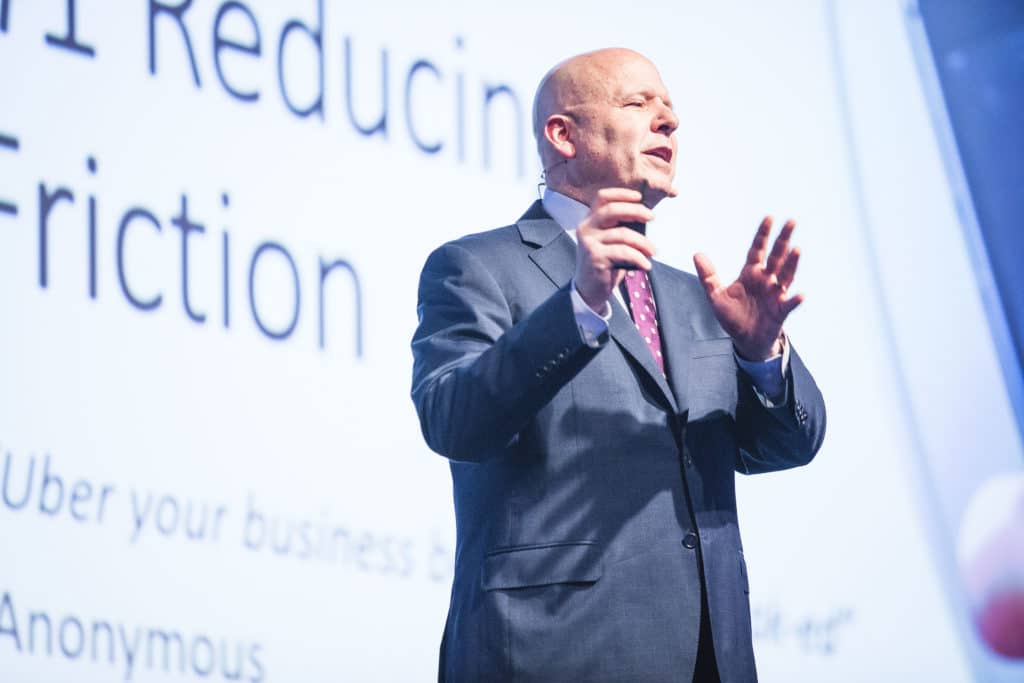
In your Forbes.com column, you stated that relationships cannot be automated. How to find the golden mean between automation and building relations?
Great question. So there is definitely if you look at the best companies, they figured out that there is a balance between digital and human to human. And I think the key, number one is to make it easy to get information regardless of how the customer wants it.
There is a demographic in the world of customers that say “hey, I want to get the information quick and I’m happy to go at it and try and find it on my own.”
“Give me a website, give me downloads, give me video tutorials, give me a knowledge base with frequently asked questions and I’ll be really, really happy. And that way I don’t have to call, be put on hold, give you my account number”, that type of thing. Yet there are other customers that just the first place they go is the telephone.
OK, so I say you have to accommodate both. You can try and educate your customers to use the digital resources, the self-service opportunity they have.
But at the same time, if they don’t want to use it, make it easy to get to the human. One of my favorite examples of this is a big, online retailer, Zappos.com. And what I love about Zappos is that even though everything is about ordering online and having it shipped to you and never talking to a person, there’s a phone number to reach them on every single page of their website. It makes it easy. And when you call, they are happy to help you.
And there is a percentage of customers that, even though it’s an online company, are going to call and ask for help and they’ve made it easy. The best companies are able to transition you from a digital experience when you’re starting to become frustrated and not get your answer straight into the human to human.
And by the way, those best companies, what makes them the best is that they don’t make the customer go back and start at the beginning. When they finally talk to a human, that agent is able to say “hey, I noticed you were on our website and you were looking at” whatever it was, “can you give me more insight as to what the problem is?” And all of a sudden that customer says “wow, this is perfect. It’s not like I have to start all over and tell this story all over again.”
So that’s what some of the best companies are doing. And it’s balancing automation, digital experience, along with the human to human experience.
How to build B2B customer loyalty nowadays?
Yeah, let’s talk about that, because B2B loyalty is different from B2C loyalty.
OK, B2C loyalty is about getting you to come back again and again and again, which, by the way, is what B2B loyalty is about as well.
But the way you go about it is different because, as a B2C consumer, even though I said malls are struggling, if you walk into a mall and you decide you want to buy a pair of pants, there’s 20 different stores that you can go to and try on different pants and that type of thing.
In the B2B world, the choices are fewer for a customer to choose, especially when it might be a manufacturer who has a specific product.
Maybe there’s only a few manufacturers in the entire world that offer that product. So what we want to look for in the B2B relationship is not just a loyal customer. We want to stop using the word customer and we want our customers to be partners with us. And when you create a partner relationship that is a vendor relationship the customer has, that’s like a better relationship on steroids.
So focus on partnership where you’re connecting with your customers on a level that shows that you’re more interested in their success than just the sale. And they’ll come back to you again and again.
Millennials and Gen Zers are shaping the future of business. What characteristics set them apart from other generations? What do they require from customer service, in your opinion? How would you advise to meet their expectations?
Wow, big question.This generation is a special generation. And what bothers me is that the perception that the older generation has of this younger generation is not accurate.
There are plenty of what I would call commonalities between the younger generations and older generations, and sometimes the older generation, sometimes both generations, can’t see those commonalities.
But I’m going to tell you what everybody wants, and they define it in different terms. The younger generation wants a good deal, but that deal is not just on price. The younger generation wants to feel connected to the company. They want to know the company stands for something that they are interested in.
So a company that’s focused on green and preserving the earth, if you will, may have a huge interest in a younger generation for whom that’s important, too. And as a result of that, they will buy based on the community involvement in the cause, the commonality of an interest that they have in those causes. So that is part of the deal. We’ve got to take a look at how the millennials and the Joneses are buying today.
And you’ve got to take a look at what they’re interested in and how they like the process to be and how they want to feel connected. And we have great opportunities. These customers make up a huge percentage of our population, so we can’t overlook their specific needs. There are plenty of great books, articles and directions on how to handle them. I’m not an expert in generations, but I can tell you this. You need to be paying attention to what the generalities are of these generations, so you can meet if not exceed their expectations.
What piece of advice would you give to SaaS companies now? How can they tackle customer service and build competitive analyses with a flawless customer experience?
So SaaS, software as a service, is a subscription model. It means I pay you a fee. It could be monthly, quarterly, annually. And I keep getting your product.
And what the biggest mistake that SaaS companies make is, is in the renewal process.
They think that if I signed up for a year, a month before I’m ready to renew they’re going to start hitting me with why I should renew again. You need to start the renewal process the day the customer decides to buy in the first place. And you need to constantly reinforce and remind them just how good you are. And that may mean reaching out on a regular basis.
And depending upon the type of business you have that might be 60 days, 30 days, it might be just twice a year. But if the only time you reach out to them is to try to sell them more, I think it’s a big mistake.
Prove the value along the way. I’m not saying you need to give anything away for free, but there are certain things I like. Maybe there’s a video that you can create that isn’t about selling the customer anything. It’s about showing how to use a product that they’re subscribing to better. And maybe it’s a customer video. And by the way, these aren’t promotional. It’s really important. It’s not just a customer saying “this is the greatest software I’ve ever had.”
No, it’s a customer saying “we’ve been using this software for two years and we found a new way to fill in the blank” and “this is how we’re using it”. And the company says “hey, maybe your other customers might want to hear about that as well, so we can create value added content and reinforce that the decision to buy from us and to use our products was the best one.” The renewal process automatically happens every time. It’s every month, every quarter, every year when the customer has to make a decision, “do I want to keep going?”
They’ll say “yeah, I love this company. The software works. I keep learning about better ways to use it. I’m a partner, not just a customer.”
How to find this balance between consumer expectations and company capabilities?
I think it’s education. The company needs to educate the customer on how to best use their products. And that is that’s number one. Number two, when the customer has certain expectations, we want to train the customer that they should call us and ask them about those expectations, ask us about what their expectations are and do we have a solution to meet them.
And if we don’t, let’s talk about “is there another way to go about it?” Or maybe it’s the kind of thing like “this is what our program does, but can I recommend something else that you can use in addition to our program?” And when you start making recommendations even about competitors products or add on products that are yours, once again, you’re showing that you’re more interested in the customer’s success than just the sale. The sale comes as a result of that, too.
Back to that word: partnership. It shows that you care about that customer, but the balance between the expectations and the company’s capabilities falls upon the company being able to educate the customer, the consumer, the partner, on what they’re capable of doing and how to go about communicating their interest and their expectations if it looks like it’s going beyond their capabilities.
Well, I would also say you’re very confident with your product if you are willing to also say about your competition.
Oh, absolutely. Yeah.
A lot of tools wouldn’t do that because they would feel insecure. But once I got it as a customer, I would be amazed if they said that “you can just switch to another tool that offers this”.
So I was at a restaurant one night and I was talking to the owner of the restaurant and we were just talking about food. And he started recommending other restaurants in the area for us to try.
And what that told me was that he was so confident that we would come back to his restaurant that it didn’t matter if every once in a while I went to the competitor. So why not just recommend the competitor if it’s the right competitor?
And I thought “wow, that guy has a lot of confidence.” He’s suggesting that next week, rather than come back and try something new at his restaurant, we try something new at a competitor’s restaurant.
And I think that’s a really cool way to go.
I have seen companies, not so much, but in all types of different businesses, obviously make recommendations. Here I use myself as an example. I tell my clients all the time “you’re looking to have a great speaker at your meeting, and I think I would be a perfect fit. But if for whatever reason you don’t think I am, let me know.”
Let me know why. Let me know what you’re looking for and I’ll suggest somebody that might fit that need for you. I’m happy to do that. It’s your meeting. I don’t want to go there and fail in your eyes. So I would rather get you the person that you want than risk you not being happy with what I do if it’s not exactly what you’re thinking about. So I think that that confidence goes to letting that client know that “hey, I’m your guy if you want me.”
And that’s what we look for. We strive to create confidence with our customers.
Which one of your books is your personal favorite?
You’re asking me to choose which child is my favorite child.
So, you know, the other day somebody said, Shep, would you please send me your favorite, what you think your favorite book is? And I grabbed two books. I love them all. As a matter of fact, I have an eighth book coming out later this year. It’s titled I’ll Be Back: How to Get Customers to Come Back Again and Again.
I’m excited about that book because it’s really a very common sense focused book on getting customers to come back. There’s some good new material that you’ll get a lot of confirmation from, but you also get some ideas.
But if I had to choose the book to give somebody right now, I would have to give them two books. The first is The Convenience Revolution. You have to understand how convenience needs to be part of your process.
And I’d like to give them Amaze Every Customer Every Time, because that book is filled with tips and tools and strategies and tactics for all types of businesses to use to get their customers to want to come back again and again.














